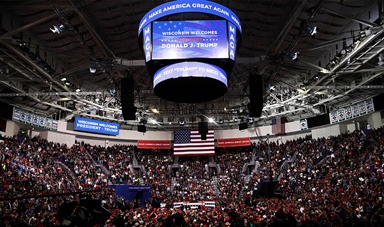Loading component...
At a glance
- Political scientists have long since known about a connection between strong economic performance and success in an election.
- However, the focus appears to be shifting to economic factors that shape people’s sense of identity.
- The current pandemic is likely to drive a further shift, with the emphasis on healthcare and how governments respond to crises.
By Prue Moodie
During Bill Clinton’s successful 1992 run for the US presidency, strategist James Carville famously reminded campaign staff, “It’s the economy, stupid”.
Back then, although the connection between a strong economy and electoral success was already recognised by political scientists, Carville’s genius was to foreground the economy as a standalone subject rather than, say, party identification or individual issues.
Theories about elections and economics constitute a small industry in the world of political science.
The Australian National University’s Ian McAllister, who runs the Australian Election Study, and Timothy Hellwig, from Indiana University, wrote in the 2016 issue of the Australian Journal of Political Science that since the 1970s, the near-universal finding had been that the economy mattered in elections in virtually every democracy. However, Australians cared less about the economy than voters in other countries did.
More recently, The Economist magazine speculated that the economy may have stopped mattering so much to voters in other countries, too. In a piece published just before the UK general election in December 2019, the magazine said, “The old rules of thumb about the business cycle and voting patterns are being replaced by a new narrative... Instead, economic factors that shape people’s sense of identity matter more.”
Among various studies, the magazine quoted one from Bocconi University in Milan, which found that countries in Europe were more likely to vote for nationalist parties if they faced significant competition from cheap imports; and another, from Oxford University, which found regions of the US affected by the use of robots in manufacturing were more likely to vote for Donald Trump in 2016.
The challenge for politicians and campaign managers is to accommodate the pandemic within their election narratives without frightening the electorate still further.
Now that the COVID-19 pandemic has disrupted everything in some way or another, it would be a brave person who tries to predict what the voters want. Still, the politicians facing voters this year can’t ignore economic history altogether.
In Australia, the conservative Coalition government was defeated in 1983, when the country was in recession. In the 1990 general election, which was held as Australia hurtled towards another recession, there was a large swing against the incumbent Labor government. In the economic slump following the global financial crisis in 2010, the incumbent Labor government failed to win an absolute majority.
In US presidential elections, the connection between economics and elections – at least at the presidential level – is even more compelling.
According to AMP Capital chief economist Shane Oliver, since 1932, not one US president has won re-election if there had been a recession within the two years prior to the election. The last president to beat the odds was Calvin Coolidge, who ascended to the presidency after serving as vice-president, and was then re-elected in his own right in 1924.
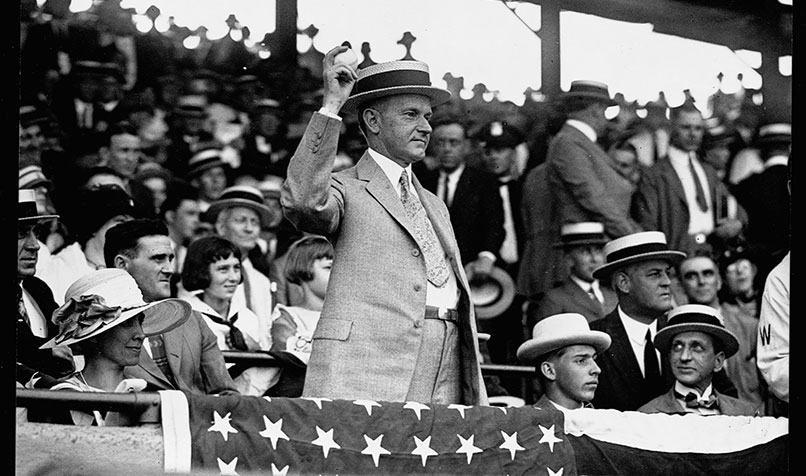
The US share market is a less reliable indicator of election victory, but worthy of attention.
Oliver comments that, in the US, the S&P 500 Index has correctly predicted the outcome of US presidential elections 87 per cent of the time since 1928. If the S&P 500 Index is up for the year three months prior to the election, he says, the candidate from the incumbent party usually wins.
The exceptions were in 1956, when the market was down but the incumbent party won; 1968, when the share market was up but the candidate from the incumbent party lost; and 1980, when the market was up, but the incumbent party lost.
We are about to find out how COVID-19 affects such trends.
In late June, Moody’s reaffirmed Australia’s AAA rating despite the huge debt load the country has incurred. A cynic might say this shows that credit ratings are nonsense.
"We've had a pretty crude debate about budget deficits and debt in Australia. COVID-19 is one thing that is changing that."
A more nuanced view, says Deloitte Access Economics lead partner Dr Pradeep Philip, is that “we’ve had a pretty crude debate about budget deficits and debt in Australia.
COVID-19 is one thing that is changing that. The activities themselves – how the debt is used – will have an impact on how it’s perceived and whether it is good for the economy or not.
“People will make judgement calls based on that, as they should.”
There are so many aspects to the pandemic. One is the fear of the disease itself. Another is the fear of the economic fall-out resulting from shutdowns. Yet another is the public’s assessment of an incumbent government’s leadership during the crisis.
The challenge for politicians and campaign managers is to accommodate the pandemic within their election narratives without frightening the electorate still further.
Leaders have come to different conclusions about how to do that. With an eye on their respective elections this year, both the prime minister of New Zealand and the premier of Queensland have been adamant that eradication or severe curtailment of the disease was their priority, with economic damage an inevitable corollary.
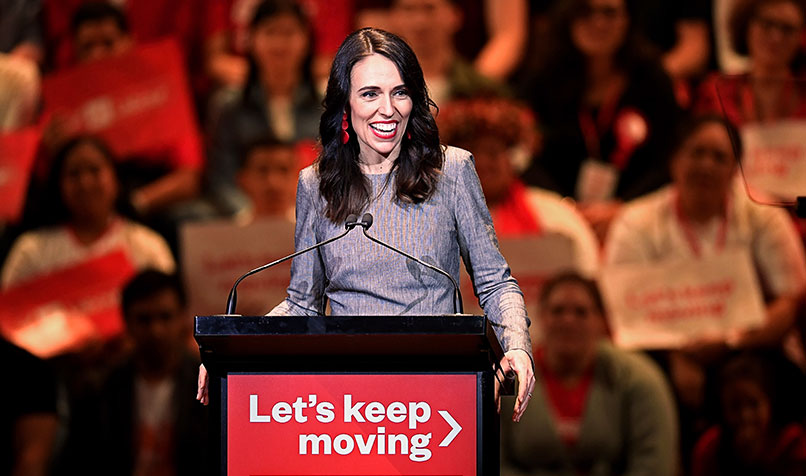
The US official response has been inconsistent. While the president has been unwilling to modify his views on the primacy of the economy, governors of individual US states did in fact mandate various degrees of shutdown.
As a result, the hit to overall US economic output from economic shutdowns doesn’t actually look too far different from that of other countries, according to the Organisation for Economic Co-operation and Development (OECD) estimates made in late March this year.
The OECD estimates that, at the height of the shutdowns, US economic output was cut by about 25 per cent, Australia’s by 22 per cent, and Spain’s and Germany’s by 29 per cent each.
These are estimates of the immediate impact of the shutdowns, not projections of the effects of the shutdowns over the longer term.
The estimates do not include spill-over effects, which typically worsen the totals by about five percentage points, but neither do they include the softening effect of various stimulus packages.
Whether the politician’s optimistic messaging about the economy can overcome the citizenry’s dissatisfaction over the handling of the pandemic response will undoubtedly be tested at many polling stations over the weeks and months to come.
Some would argue that, if COVID-19 teaches politicians around the world anything, it is to never forget another, less famous instruction of James Carville’s from that 1992 US presidential campaign: “Don’t forget health care”.
Elections and technology
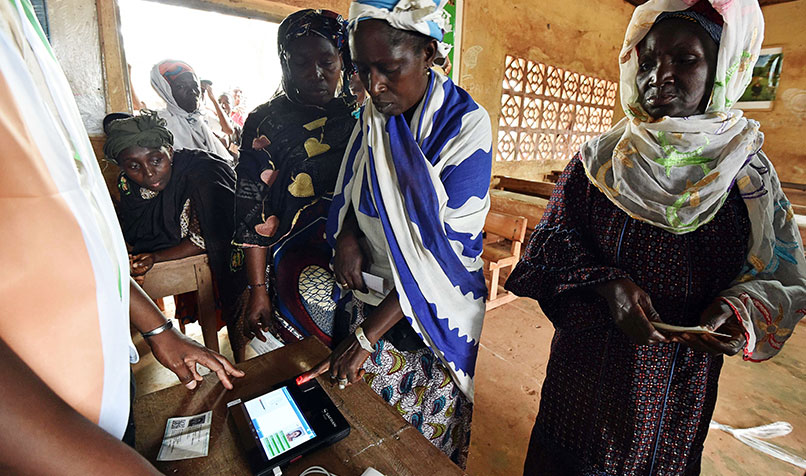
Election technology can be divided into voter registration technology and voting technology.
Voter registration
Here, the hot topic is biometrics. Biometrics – identification via a range of personal characteristics – is increasingly used in fledgling democracies to build a comprehensive electoral roll from scratch.
Biometric characteristics can include fingerprints, palm prints, retina and iris scans, voice patterns and DNA profiles, according to the International Institute for Democracy and Electoral Assistance (IDEA) 2017 guide to biometrics.
Biometric systems do not prevent malpractice, however. In Kenya, for example, the country’s High Court has suspended the biometrics program because of flaws in the security of the data and discrimination against minority ethnic groups.
The biometric systems are also expensive to implement. According to IDEA’s 2017 estimate, the initial cost of biometric systems is between EUR 2 (A$3) and EUR 10 (A$16) per registered voter. After the initial purchases, equipment needs to be maintained, upgraded and/or replaced between elections.
Voting technology
Here the hot topic is whether electronic systems should completely replace paper. There is at least one intriguing hint that the voting medium may actually affect who receives the votes.
In a paper published in August 2016, Australian Parliamentary Library’s senior researcher Rob Lundie breaks down electronic voting into the following technologies:
- Electronically assisted voting that enables visually impaired voters to complete a ballot paper with the help of an operator, through audio prompts on the phone or using an electronic voting machine
- Isolated static electronic voting, where voters cast their votes at polling stations on a stand-alone computer or a local area network without an internet connection
- Internet voting through various methods, including static voting at polling places via dedicated computers or networks, mobile internet voting using devices carried by visiting polling officials, and remote internet voting, where voters use any device with an internet connection.
Electronic voting has immediate cost benefits for any country where a large proportion of votes is made up of postal and pre-polling votes.
However, as with biometrics, electronic voting systems are a security risk.
Electoral analysts generally advocate that, if a country moves to electronic voting, it should mandate an audit trail, either digital or paper, that is verifiable by individual voters.
There may be other interesting consequences of electronic voting.
In Brazil, which has been gradually introducing electronic voting since 1998, voters have less information about candidates when they vote electronically.
“The shift away from traditional paper ballots and the introduction of electronic voting increased viable candidates’ vote shares and decreased non-viable candidates’ vote shares,” says a 2018 study in Latin American Politics and Society by Rodrigo Schneider and Kelly Senters. In other words, electronic voters had to remember more about the candidate in order to vote for them, as compared to paper-based votes.
How much do elections cost?

Democracy is expensive, and the bad news for citizens of developed democracies is that there is not much that can be done to reduce expenses.
For countries that are still building their democracy infrastructures, costs are likely to come down pretty fast once the systems are in place and the process takes hold. However, then they start going up again.
In 2017, the UK and Kenya both held general elections. According to the BBC radio program More or Less, the cost of the UK’s election was US$150 million (A$214 million), while the cost of Kenya’s was US$480 million (A$686 million).
These are the costs of administering the election, not money spent on campaigning.
Comparing election costs across countries is more of an art than a science: the moving parts vary so much from one country to another.
However, it’s worth considering why Kenya’s election costs differed by such an order of magnitude from the UK’s.
The UK figure covers ballot papers, postal votes, staff in polling stations, vote counters, getting the votes in from different polling stations and the cost of allowing every candidate one free mail-out to every voter in the constituency, says David Cowling, a visiting senior research fellow at King’s College London.
Kenya also had to do those things, although its support for individual candidates was not as generous as in the UK.
However, according to Abdi Latif Dahir, a reporter with online magazine Quartz Africa and now with the New York Times, Kenya also paid to set up a biometric voting system where voters got their fingerprints logged in advance, so they could be checked at the polling station.
To support the new system, Kenya paid for newspaper advertisements educating people about how the system worked. Kenya also had to pay for security to protect voters from terrorist attacks. In addition, Kenya is about twice as large as the UK, with a more scattered population.
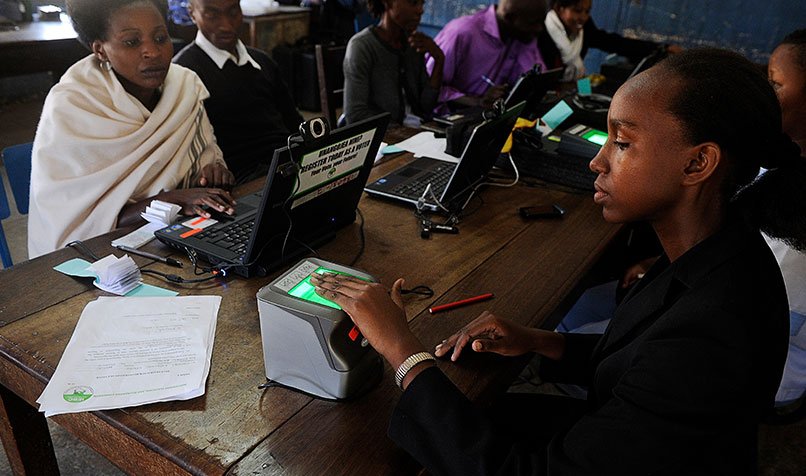
While there are some good reasons for Kenya’s election to be more expensive than the UK’s, there is still an unexplained element, according to both Abdi and Cowling, and the cost differential is not just between Kenya and the UK.
Kenya’s 2017 election, Abdi estimates, cost US$25 (A$36) a head (total cost divided by everyone eligible to vote), whereas contemporary elections in Ghana and Tanzania, also large countries, cost US$12 (A$17) a head and US$5 (A$7) a head, respectively.
In a survey conducted between 2003 and 2004, the ACE Electoral Knowledge Network (ACE) found that in countries where multi-party democratic traditions were not mature, elections were consistently more expensive than in countries where the democratic tradition was well-established. This trend cut across regions, levels of economic development and even interruptions of electoral practice by military breakdowns.
“[This finding] offers strong support for the claim that efforts at capacity building in electoral administrations are probably cost-effective in the longer term,” the ACE comments in the survey report. Capacity building includes establishing and consolidating a permanent electoral administration.
The ACE report divides electoral costs into integrity costs and core costs. Integrity costs can be reduced, and quite quickly, by investments to improve peace and security. However, once democracy becomes established, core costs – which include personnel, ongoing technology investment and postal voting – are likely to increase again, the report notes.
